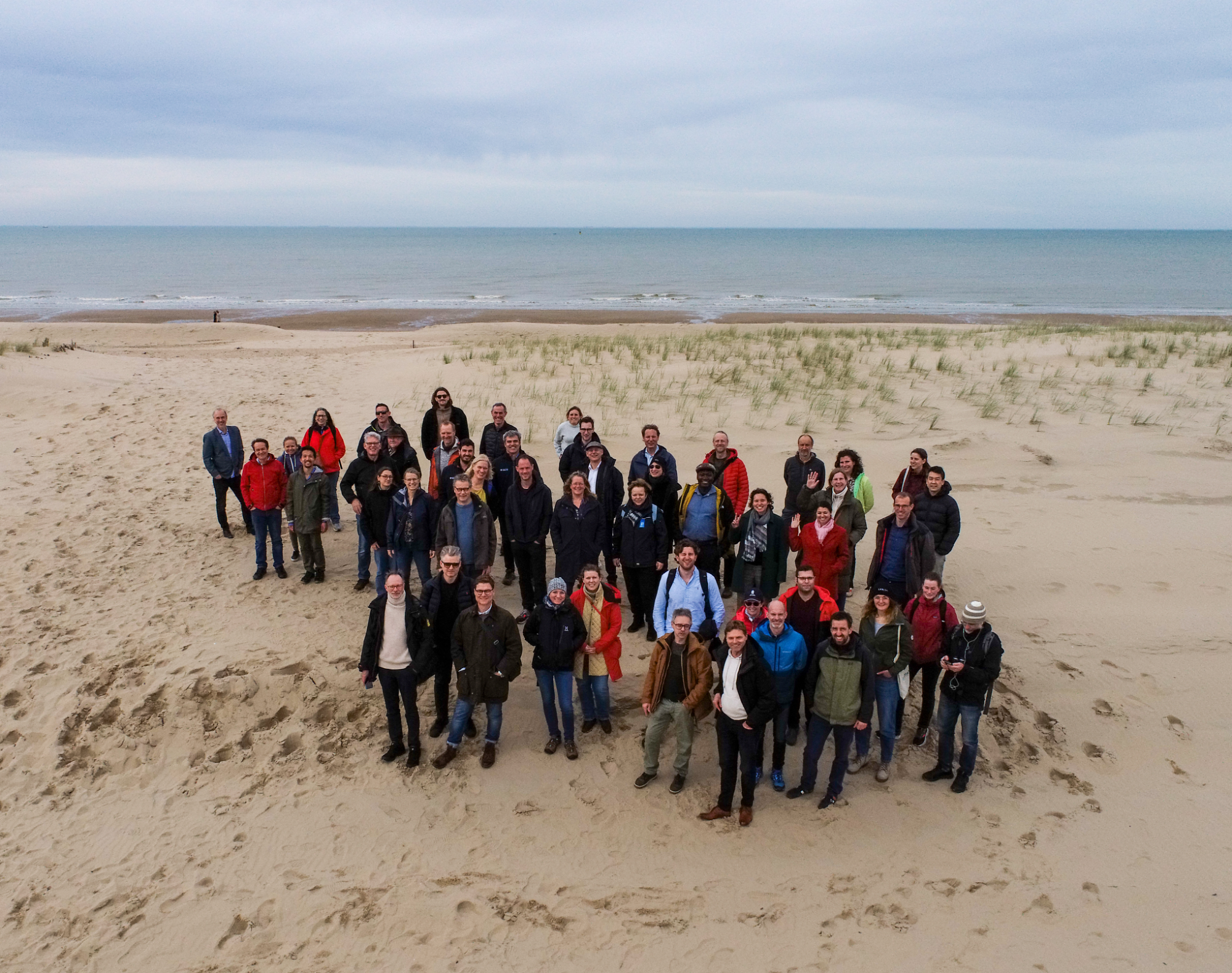From Tuesday till Thursday (12th-14th of March), the MANABAS COAST partners met up for a project meeting in Bruges. The aim was to form subgroups around the 'how-to' questions that emerged from the baseline assessment.
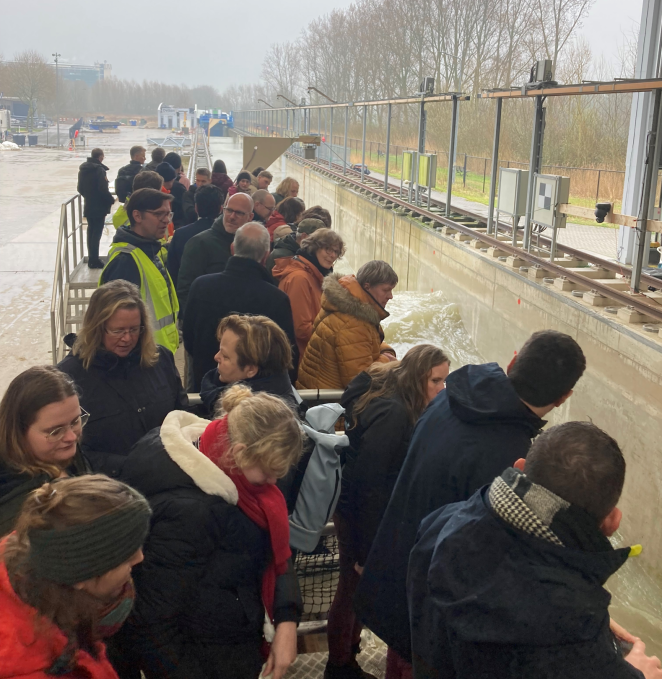
Optional day | Visiting the Delta Flume and Oosterscheldekering
Monday 11th was an optional day: some partners went to visit the ‘Delta Flume’ in Delft, the Netherlands. The MANABAS COAST partners were invited by Deltares and the Living Dikes project to experience extreme wave loads on a combined saltmarsh-dike system at the Delta Flume. It was amazing to see how the generated waves (up to 3 meters) were traveling through the flume over the saltmarsh, hitting the concrete dike at the end. We learned that the saltmarsh grass and soil, are surprisingly strong under various wave conditions. Important work to develop confidence about the strength and wave dampening effects of these natural structures. The afternoon marked a visit to the Oosterscheldekering.
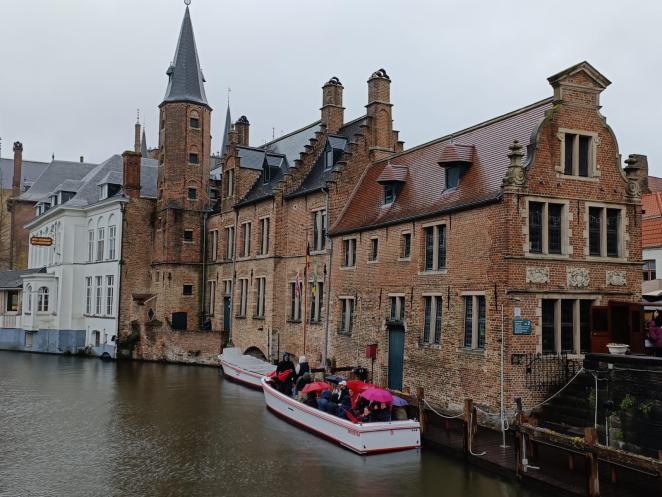
March 12th | Project-level baseline for mainstreaming NbS
Last year, a baseline assessment was completed by each of the pilot leads. Their individual reports were analysed by a small analysis team, which met in Stockholm. The analysis team presented their findings of the Flanders meeting, which makes up the overall baseline report. The overall baseline gives a snapshot of how all pilots understand the enablers for mainstreaming Nature-based Solutions (NbS). It also shows to what extent the enablers play a role in each pilot. Not only will the baseline be used to assess progress, but also to drive cooperation between the NbS pilots. This cooperation was kicked off on March 12th with the formation of four subgroups. Each subgroup goes to work on a ‘How To’ question around a different theme. The themes are: sand nourishment, salt marshes, monitoring and Nature 2000.
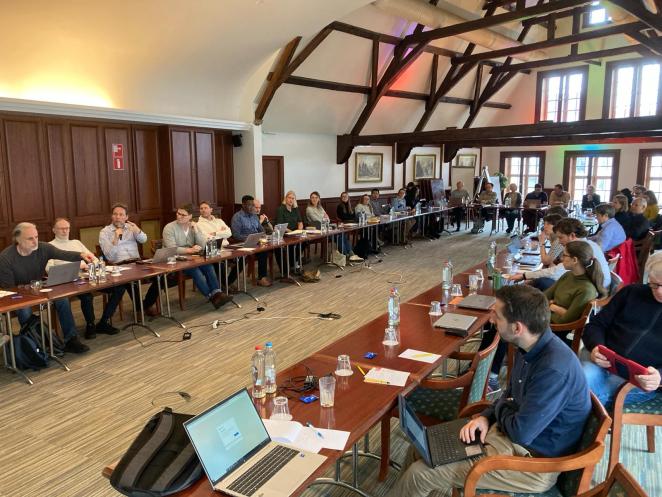
March 13th | Moving beyond the baseline
On March 13th, the MANABAS COAST project partners looked beyond the baseline assessment. Each thematic subgroup presented what they would like to learn about their theme that emerged from the overall baseline. An example is the wish to learn from each other how to implement NbS in Nature 2000 areas. Some project partners have more experience with this challenge, others have less experience. There is a genuine interest to share experiences. Such input was collected from all subgroups and reflected upon the project partners. Following the Flanders meeting, the subgroups will work on their learning questions. They will write down their findings about the ‘how to’ in two-pagers. These will help to put the lessons learned into the MANABAS COAST framework and use them for capacity building.
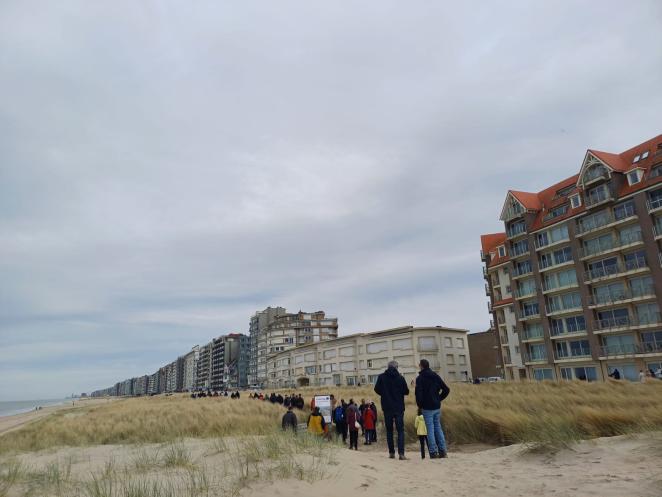
March 14th | Getting to know the Flemish stakeholders and NbS pilot
March 14th constituted a symposium with external stakeholders at the Flanders Maritime Laboratory at Oostende. The symposium focused on the implementation and research of NbS for managing the Flemish coast. It was hosted by the Flemish Department of Mobility & Public Works (MOW). The symposium consisted of six interesting talks. Edward van Keer (MOW) talked about the coastal vision, which looks at coastal protection up to 2100 and beyond. It was co-created with more than 100 professionals and political stakeholders. Their preferred solution is to move the coastline seaward. This solution has many positive impacts for nature, for example regarding conservation objectives on the landside. It also creates space for implementing NbS. In his talk, Sebastian Dan (MOW) explained that NbS, like growing dunes in front of dikes, are effective to keep nourished sand in the nearshore area. Within MANABAS COAST, MOW is experimenting with the ‘dune in front of dike’ concept in their NbS pilot site at Raversijde. The lessons learned from this pilot, like its impact on beach and sea dike management, were presented by Peter van Besien (from the Coastal Division) and Karel Van Ackere (from the City of Oostende).
According to Kristien Veys (Blue Cluster), we need to move from pilot scale to truly full scale NbS for coastal protection. “For that we need data driven solutions and monitoring that will give us insight into the natural processes. We need to better understand these processes in order to use them to our advantage, instead of working against them.” From Charlotte Taelman (UGent) and Steven Muylaert (MOW) we learned how monitoring with drones can help to understand how dunes are shaped by ecological plant sand feedback. And we could even see the drones in action at pilot site. The best way to make a group photo!
